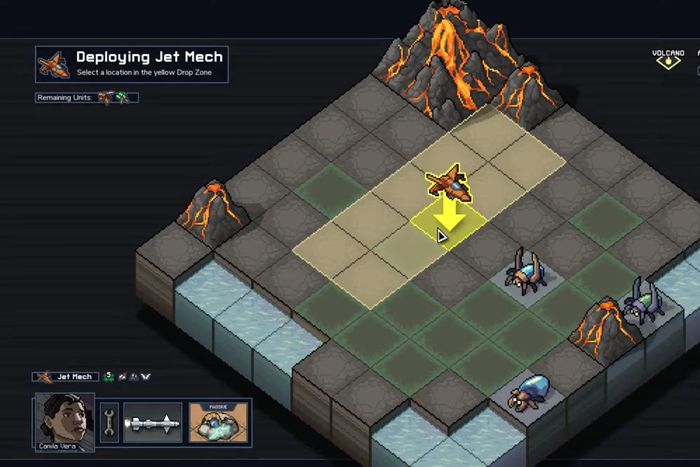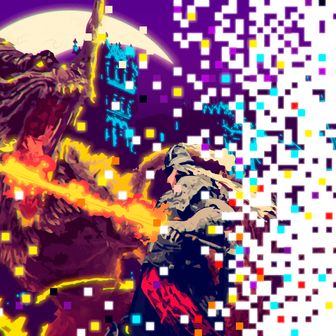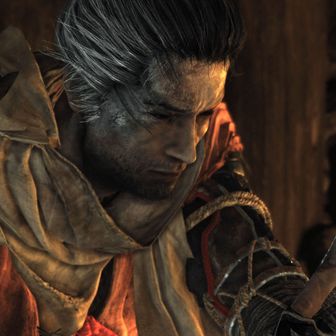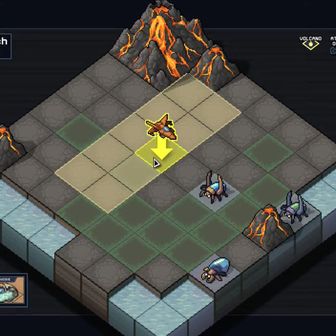
Imagine chess, but instead of knights and pawns, you’ve got combat mechs and techno beetles. You build a team of pieces to suit your strengths and counter your opponent’s strategies, all in the service of defending cities scattered about the board — alongside mountains, rivers, ice fields, and more — from a violent alien race.
What you’re envisioning is essentially the 2018 Subset Games hit Into the Breach, a turn-based strategic puzzler in which you move your customized team of mechs around a small board-game-like grid as you try to defeat your alien opponents. In the game’s tough final mission, the Last Stand, you’re up against a relentless army of invaders that is far too large and powerful to defeat outright. But you’re not trying to win. Not conventionally. Instead, your goal is to protect the enormous Renfield Bomb long enough for it to detonate and destroy the alien threat for good.
It’s a punishingly difficult finale and one that Matthew Davis, Into the Breach co-designer and programmer, says was influenced by the 2012 game FTL: Faster Than Light, the breakout title developed by his team at Subset Games. “FTL had an excessively difficult boss that broke a lot of the core rules of the game,” he explains. “With Into the Breach, we wanted the Last Stand to reflect a challenge similar to what the player had already encountered but thematically more exciting.”
That’s exactly what the Last Stand does, incorporating all of the dynamics gamers had gotten used to but turning them up to a diabolically hard degree. It’s a level that more than earned its place at No. 27 on our “100 Hardest Video Game Levels of All Time,” and Davis took the stand himself to explain why Into the Breach’s final fight is a brutal, but fair, one. (Well, unless you play on the Unfair difficulty setting, in which case all bets are off.)
Was your team surprised by the response to the Last Stand’s difficulty?
The biggest surprise was just how variable players found the difficulty. Most games seem to receive general agreement around how hard (or easy) they are, while Into the Breach hitting everyone in such a dramatically different way was a surprise.
The final level specifically was not, to my memory, called out. This was a huge departure from FTL — we still get emails today with people complaining about how impossibly difficult the final encounter in FTL is. It was noteworthy for us that the final experience blended well with the rest of the game. It wasn’t something that felt unreasonably hard or easy, which is exactly where we wanted it to fall on the difficulty spectrum.
As a longtime tactical RPG fan, I was surprised by how challenging Into the Breach was compared to similar games. It’s almost like a puzzle game.
The game is absolutely a puzzle game masquerading as a strategy game, and the puzzles it creates seem to challenge people in dramatically different ways. We get complaints from players who find the game trivial and will beat it easily on their first try and complaints from players who find it too hard even on the easiest setting. I can’t explain the large divide, but I do think it’s a game that can be fun when it’s too hard and when it’s too easy. So ultimately, it’s not something that seems to have hindered the game much.
Is striking that balance between too hard and too easy challenging?
Making Into the Breach work as a game was incredibly difficult. The puzzlelike nature of the game doesn’t leave a lot of breathing room when it comes to difficulty. There’s a dangerous cliff between “this is challenging” and “this is unsolvable and impossible” when it comes to puzzles. Perfecting the general balance to make the puzzles consistently work is definitely our biggest accomplishment. We’ve had many players assume that there’s additional logic behind the scenes that ensures there’s a “solution” to any given turn, and that speaks to just how successful we were in making the game feel fair. We don’t have that logic to protect the player. We just have the years of iteration on spawn rates, map designs, player weapons, et cetera to ultimately make something that (mostly) works.
How do you go about designing a really tough level? Or an easy one?
We rely on an excessive amount of internal developer testing. Because of the random variation possible in any given mission, it requires a lot of replays in order to get a good handle on where the difficulty stands.
With Into the Breach, most of the difficulty was driven by the algorithm that handles the Enemy spawning, not necessarily any particular level or mission. It took years of tweaking when and where enemies would spawn in order to keep an appropriate level of challenge for any given difficulty. The nice part of that, though, was once we had the spawning rates behaving reliably, it was relatively easy to add new missions or “levels” that preserved a similar level of challenge.
Challenging games are en vogue these days, thanks to games like Elden Ring, Super Meat Boy, and various roguelikes like Into the Breach — what do you think makes difficulty so compelling for so many players?
Sid Meier, co-creator of the Civilization series, once described games as “a series of interesting decisions.” I think that’s a perfect description of what we’re trying to accomplish. And a high level of difficulty helps to make every decision interesting, because you end up with more weight and consequence behind every choice. There are other ways to make decisions meaningful, but a high difficulty is quite reliable.
Into the Breach has four different difficulties, letting players pick the experience that’s right for them. What does it take to conquer the Last Stand on the Unfair level?
It takes a healthy amount of luck! We designed that difficulty only for the new “advanced edition” that was released last summer. It was intended for players who found the game too easy, and we intentionally pushed the enemy spawning and challenges to something we felt was “unfair.” More skilled players in the community can still reliably beat it — but, personally, I struggle.







